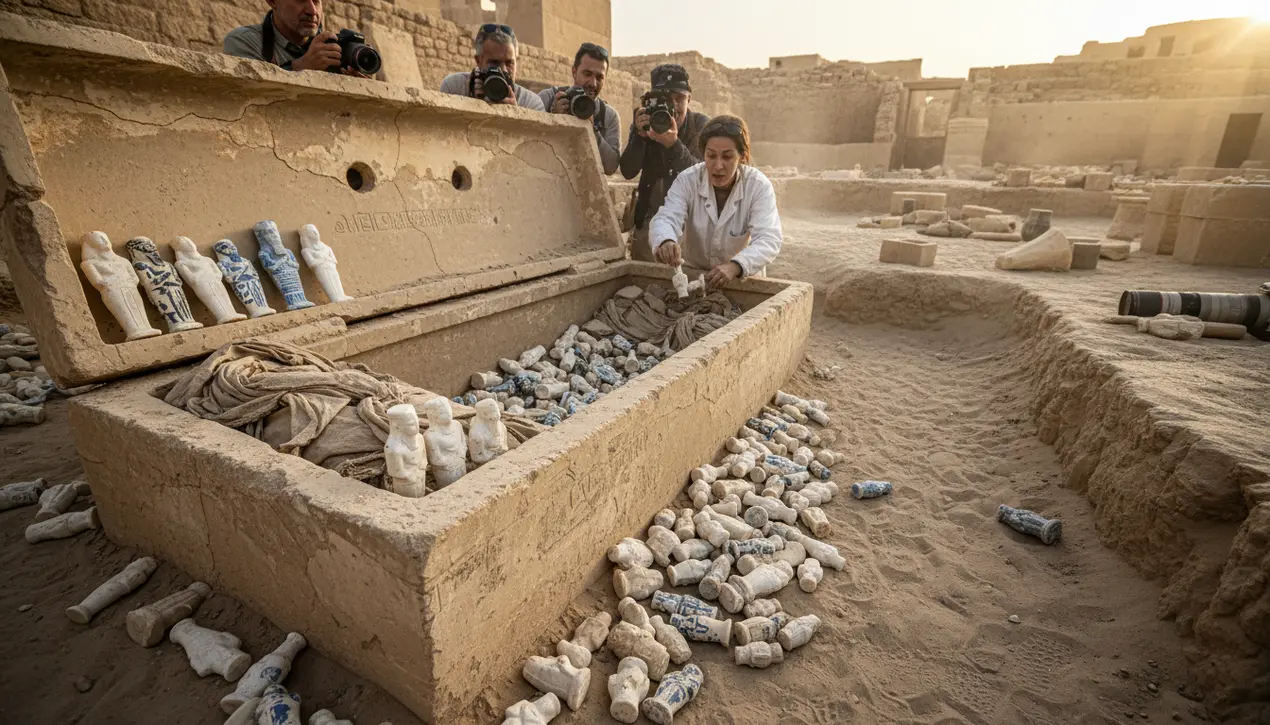
SciencearchaeologyAncient Civilizations
Ancient Pharaoh May Have Hijacked Another's Tomb, Figurines Suggest
TH
Thomas Green
4 hours ago7 min read
In a discovery that reads like a cosmic puzzle box left by the ancients, the tomb of Pharaoh Osorkon II at Tanis has yielded a clue that threatens to rewrite a chapter of Egyptian history. The find? A veritable army of funeral statues, known as shabtis, whose sheer number and conflicting inscriptions suggest a startling act of royal subterfuge—that Osorkon II may have performed the ultimate power move by hijacking the final resting place of a predecessor, potentially the lesser-known Shoshenq III.This isn't merely an archaeological footnote; it’s a celestial crime scene buried for millennia. Imagine the scene: deep within the necropolis, a chamber designed for one king now appears to be a shared, or perhaps usurped, space.The shabtis, intended as servant figures for the afterlife, are the key witnesses. Their testimony, etched in hieroglyphs, points to two distinct royal identities vying for dominion in the realm of the dead.This revelation sends ripples through our understanding of the 22nd Dynasty, a period often viewed as a time of declining central power. For a pharaoh to commandeer another's tomb is not just a practical solution to a burial problem; it is a profound theological and political statement, a desperate gambit for immortality that overrode the sacred rights of another sovereign.It’s the ancient equivalent of a hostile corporate takeover, but with eternal consequences. Experts like Dr.Eva von Dassow, a leading Egyptologist, caution that while the evidence is compelling, the full story is still emerging from the sands. 'The distribution of artifacts within a tomb is a complex language,' she notes.'We must ask if this was an act of disrespect, a pragmatic consolidation of royal burials during a time of instability, or even a posthumous honor, though the latter seems less likely given the cultural primacy of an individual's prepared journey to the afterlife. ' The implications are staggering.If Osorkon II did indeed co-opt Shoshenq III's tomb, it speaks to a period of intense internal rivalry and perhaps a struggle for legitimacy so severe that it extended beyond death. This act would have been a clear signal to the living and the gods about where true power resided, potentially an attempt to absorb the legacy and divine authority of the previous ruler.The very stones of Tanis whisper of a dynasty grappling with its own mortality, where the eternal peace of a king was not guaranteed but could be reassigned by a successor with the will and the resources to do so. This discovery forces us to look at the grand narratives of Egyptian history not as a seamless procession of god-kings, but as a human drama filled with ambition, conflict, and the relentless pursuit of a legacy that could withstand the ravages of time itself.
#featured
#archaeology
#ancient Egypt
#pharaohs
#tomb discovery
#funeral figurines
#Osorkon II
#Shoshenq III
#Tanis
Stay Informed. Act Smarter.
Get weekly highlights, major headlines, and expert insights — then put your knowledge to work in our live prediction markets.
Related News
Comments
Loading comments...
© 2025 Outpoll Service LTD. All rights reserved.